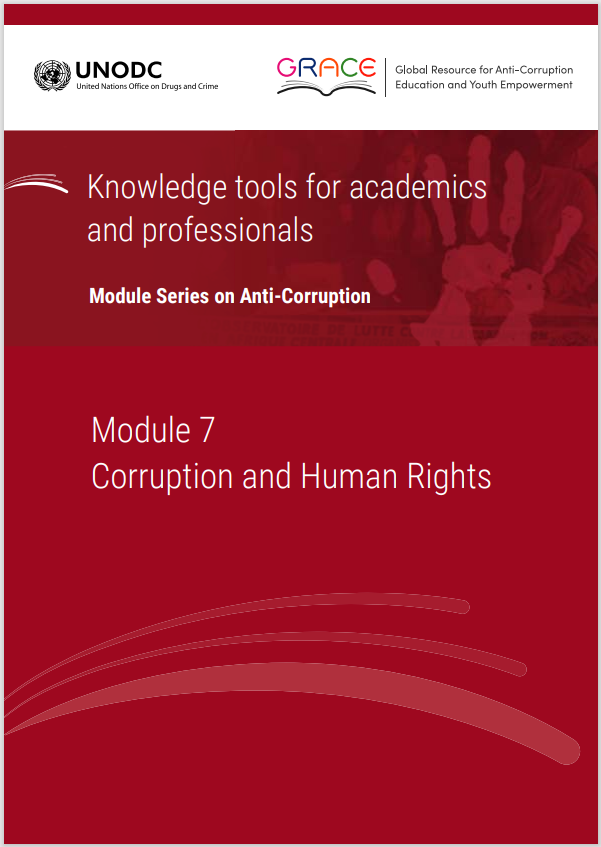This module is a resource for lecturers
Possible class structure
This section contains recommendations for a teaching sequence and timing intended to achieve learning outcomes through a three-hour class. The lecturer may wish to disregard or shorten some of the segments below in order to give more time to other elements, including introduction, icebreakers, conclusion or short breaks. The structure could also be adapted for shorter or longer classes, given that the class durations vary across countries.
Introduction (30 minutes)
- Conduct Exercise 1 (20 minutes).
- Introduce students to the key issues addressed in the Module (10 minutes).
Overview of the corruption–human rights nexus (30 minutes)
- Start with showing the short video Corruption and Human Rights created by the Council of Europe.
- Based on the relevant sections of the key issues, discuss the following questions: What do human rights mean? What does corruption mean? What are the links between the two?
Group Exercise (20 minutes)
- Conduct Exercise 2 or Exercise 3.
The impact of corruption on human rights (60 minutes)
- Discuss how corruption affects the different groups of human rights and the various approaches that help us understand the ways in which corruption enables or causes the violation of human rights.
- Present the human rights-based approach to corruption and its pros and cons.
- Discuss the issue of corruption as a free-standing human rights violation and the added value of integrating human rights and anti-corruption strategies.
Group Exercise 4 (30 minutes)
- Conduct Exercise 4.
Conclusion (10 minutes)
- Human rights and corruption are intimately connected; review this notion with your students and have them state the connections.
 Next: Core reading
Next: Core reading
 Back to top
Back to top
